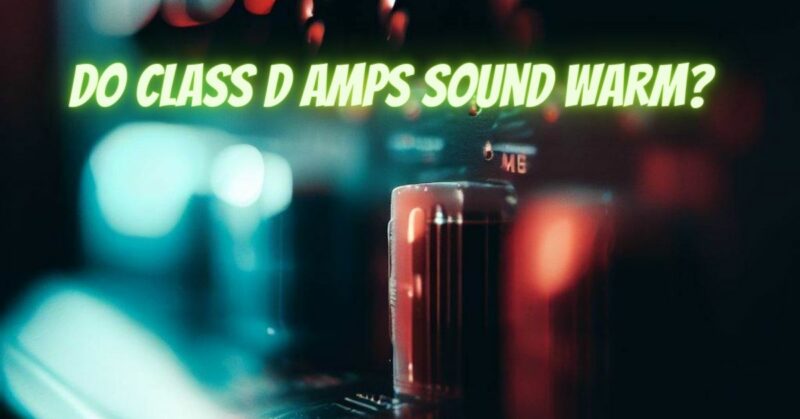The world of audio amplification is rife with debates and discussions about the merits of various amplifier classes. One common question that arises is whether Class D amplifiers sound warm. In this article, we will explore the technology behind Class D amplifiers, dissect the concept of “warmth” in audio, and examine whether Class D amplifiers possess this characteristic.
Understanding Class D Amplifiers
Class D amplifiers, also known as digital or switching amplifiers, have gained popularity due to their efficiency, compact size, and cool-running nature. These amplifiers operate by rapidly switching the output transistors on and off, effectively pulse-width modulating the input signal to amplify it. This process is quite different from traditional Class A and Class AB amplifiers, which use continuous linear amplification.
The Concept of “Warmth” in Audio
Before delving into the sound characteristics of Class D amplifiers, it’s crucial to understand what is meant by “warmth” in the context of audio. Warmth refers to a sonic quality that is often associated with analog audio equipment, particularly vacuum tube (valve) amplifiers. Warmth typically includes the following characteristics:
- Harmonic Distortion: Warmth can be achieved through the introduction of even-order harmonic distortion. This distortion adds subtle harmonics to the audio signal, creating a pleasing and euphonic quality.
- Smoothness: Warmth often implies a smooth and non-fatiguing sound that lacks harshness or excessive brightness. It can be perceived as a comforting, enveloping sound.
- Tonal Richness: Warm audio equipment tends to impart a fullness and richness to the sound, with a sense of depth and body that enhances the musical experience.
Do Class D Amplifiers Sound Warm?
Class D amplifiers are generally not known for their warmth in the traditional sense. This is because the design principles of Class D amplifiers prioritize efficiency, compactness, and accurate signal reproduction over introducing harmonic distortion or coloration.
Here are some key considerations regarding the sound characteristics of Class D amplifiers:
- Accuracy and Precision: Class D amplifiers excel in delivering a clean and precise reproduction of the audio signal. They are often prized for their ability to faithfully reproduce the source material without introducing coloration or distortion.
- Neutral Sound: Class D amplifiers are typically characterized by their neutrality, providing a transparent and uncolored sound. This can be seen as a departure from the warm, colored sound associated with analog amplifiers.
- Compatibility: The perceived warmth of audio equipment can also depend on the synergy with other components in the audio chain, such as speakers and source equipment. Pairing a Class D amplifier with warm-sounding speakers or source components can influence the overall sound character.
- Digital Signal Processing (DSP): Some Class D amplifiers incorporate DSP processing that allows users to customize the sound profile. This means that with the right adjustments, you can tailor the sound to your preference, including adding warmth if desired.
In conclusion, Class D amplifiers are not inherently known for producing a warm sound. Their design principles prioritize accuracy, efficiency, and signal fidelity, which tends to result in a neutral and transparent sound. However, the perception of warmth in audio is subjective and can be influenced by various factors, including equipment synergy and user customization. If warmth is a desired characteristic, it may be achieved through careful selection of associated components or by utilizing DSP features in some Class D amplifiers. Ultimately, the choice of amplifier should align with your personal listening preferences and the sonic qualities you value most.


